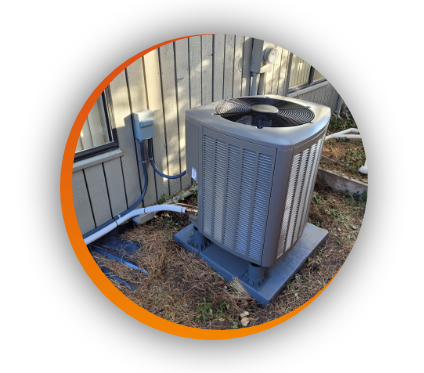If you’ve ever gone shopping for an HVAC system, you may have noticed a label on each unit with a number rating called SEER. Most people know that the higher the number, the better. They don’t, however, know exactly what a SEER rating is and how it should influence their purchasing decision. To clear that up, here’s a guide to SEER ratings. We’ll discuss what they are, what they mean, and how to translate them into usable real-world information.
What Is a SEER Rating
SEER is an acronym for seasonal energy efficiency ratio. It’s a standardized efficiency rating system devised by the Air Conditioning, Heating, and Refrigeration Institute (AHRI). Its purpose is to provide a simple way to compare the relative energy efficiency of HVAC systems. The formula to assign a SEER rating to an HVAC system is simple:
(Total Cooling Output in an Average Cooling Season ÷ Total Electricity Usage Over the Same Period = SEER Rating)
The Factors Involved in a SEER Rating
The first thing you’ll need to understand is how the AHRI defines a typical cooling season. For SEER rating purposes, a typical cooling season consists of 1,000 hours of operation. That equates to running your air conditioner for eight hours per day for 125 days. The SEER rating also assumes a constant indoor temperature and an outdoor temperature gradient between 60 and 100-plus degrees Fahrenheit.
To determine the cooling output of the system, the formula counts how many units of heat — measured in British Thermal Units (BTUs) — that the system removes from the indoor air under those conditions. A single BTU of heat represents the cooling power needed to lower one pound of water by one degree Fahrenheit at sea level. To put that into more relatable terms, a single BTU is roughly the amount of energy released when you burn a wooden match.
With those measurements settled, all that’s left to do to calculate a SEER rating is to count the number of kilowatt-hours of energy the unit uses to do its work. Plugging all of that data into the formula above yields a two-digit number. That’s a SEER rating.
How Do Seer Ratings Relate to Operating Costs?
Now that you understand how SEER ratings work, there’s one more thing you’ll need to know. It’s that you can use an HVAC unit’s SEER rating to estimate how much it would cost you to operate the system through a typical cooling season. For simplicity’s sake, the easiest way to do this is to take a look at the yellow EnergyGuide label on the unit you’re considering. Below the SEER rating, that label will include an estimate of operating costs for an average year.
Be aware, however, that the cost of electricity the EnergyGuide label uses to reach its conclusion may be higher or lower than what you pay. You can substitute your cost of electricity in the label’s equation to arrive at an estimate for your specific operating circumstances. If you do that, you’ll be able to judge the real-world operating differences between HVAC systems with higher or lower SEER ratings.
You should know that the savings yielded by each step up in SEER aren’t constant. At the lower end of the SEER scale, the difference between each step up is higher than at the higher end of the scale. That translates into savings of approximately:
- 6.67% from a 15 SEER to a 16 SEER
- 6.25% from a 16 SEER to a 17 SEER
- 5.88% from a 17 SEER to an 18 SEER
- 5.55% from an 18 SEER to a 19 SEER
- 5.00% from a 19 SEER to a 20 SEER
You can use the scale above to determine how much you might save on electricity over the estimated lifespan of the system. That will help you to figure out if the added cost of a system with a higher SEER rating is worth paying.
What’s a Good SEER Rating?
Right now, the average HVAC system sold has a SEER rating between 15 and 18. As you can tell from the energy savings scale above, that’s the range where you can expect significant differences in energy savings.
You can find units that have a SEER as high as 21 if you look around. Systems with SEER ratings higher than 18 may come with price tags that outstrip what you’d save in electricity costs. In some regions of the US, some of that extra cost can be reimbursed by your local power company through rebates for high-efficiency items. Check with your local utility company to see what kinds of rebates are available. Don’t forget to look at the fine print. Some of these rebates only apply once in a lifetime, for example, while others can be used every time you purchase an efficient appliance.
The government sets minimum efficiency standards for all new HVAC systems sold. In 2022, the minimum SEER for a new HVAC unit is 13.
Mandated SEER Minimums
As of 2023, all HVAC systems sold in the northern US states must have a SEER rating of at least 14. In the southern states, the minimum for new systems is a SEER rating of 15. Those standards are set by the US Department of Energy, and help to promote higher energy efficiency in operating air conditioning systems as the years go by.
That’s a bigger deal than you might imagine. As of 2021, air conditioners accounted for a full 10% of all of the electricity used in the United States each year. That number, absent greater efficiency standards, will continue to climb as average temperatures across the nation do, too.
The added strain of longer air conditioner operating hours is starting to put unsustainable stress on our electricity grid. In other words, the continued push for higher SEER ratings is good for your wallet but also for the electrical grid and the environment, too. In some parts of the country, excessive use of AC units or heating units has led to brown-outs or shorts in the electrical grid during heat waves or cold snaps. A more efficient HVAC system can go a long way in helping to reduce your need for community power during these times.
Trust the Experts for All of Your HVAC Needs
Hopefully, you now have a firm grasp of SEER ratings. You should understand what they are, how they’re calculated, and why they matter. That should make it far easier for you to make an informed purchasing decision when the time for a new HVAC system comes. SEER ratings aren’t the only important thing to consider about a new HVAC system, though.
If you’re in the market for one, it’s a good idea to consult the experts here at Blue Best Plumbing, Heating, Air, Generators. We’ve served the Bountiful, Utah community and the surrounding area for over 20 years. We offer a complete range of air conditioning installation, repair, and maintenance services to cover all of your AC needs. We’re also the only woman-owned and operated HVAC company in all of Utah, and quite proud of it.
If you need a new air conditioner or help to keep your existing system in good working order, contact Blue Best Plumbing, Heating, Air, Generators today and we’ll be happy to help!








